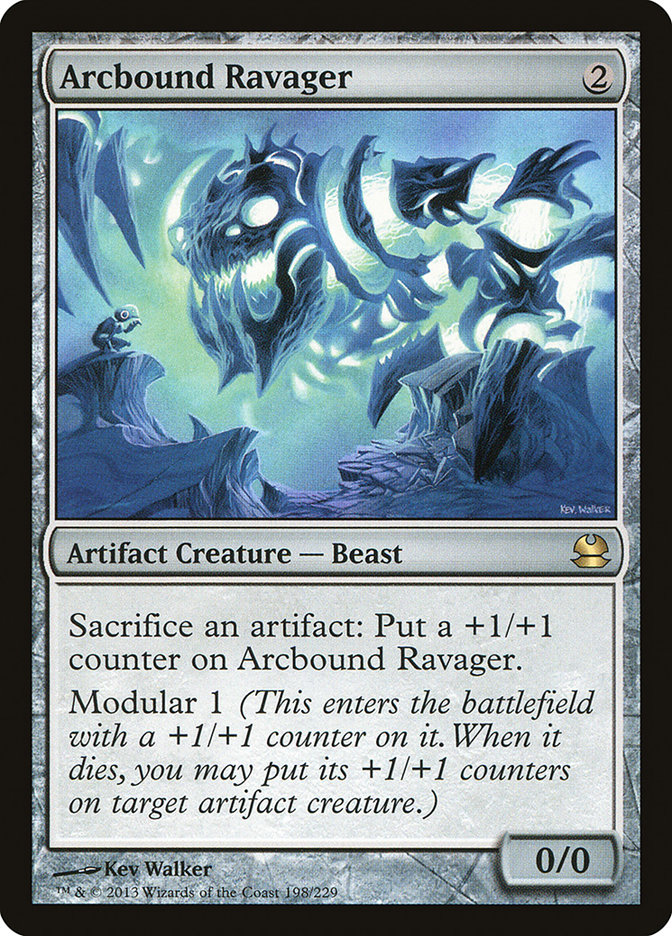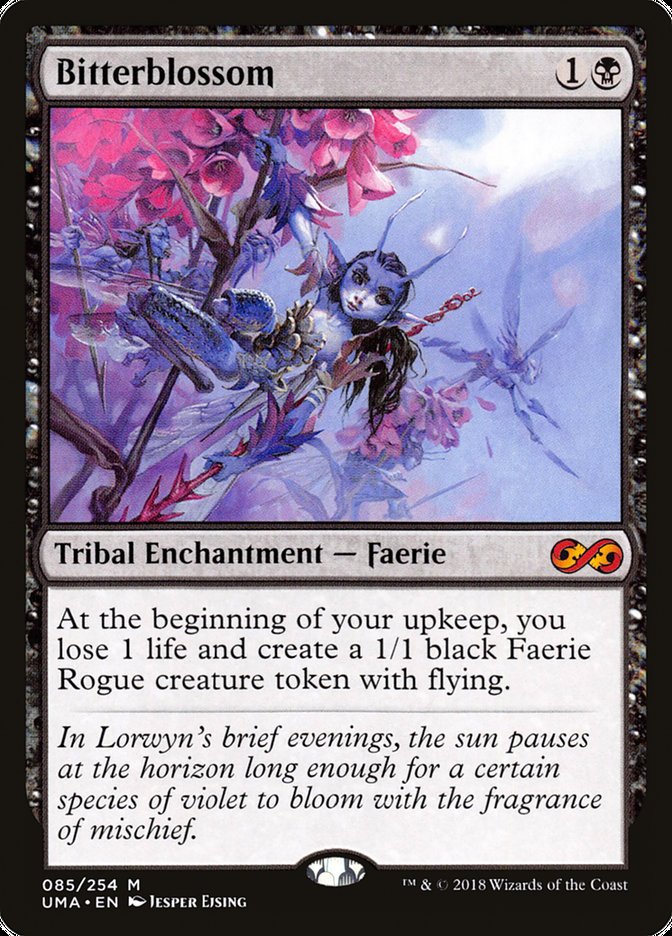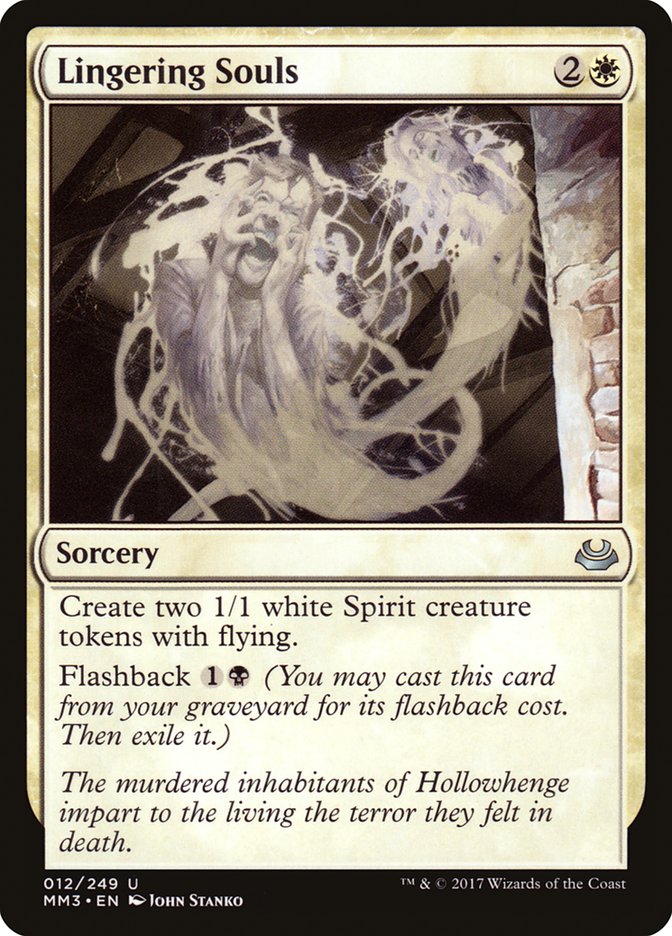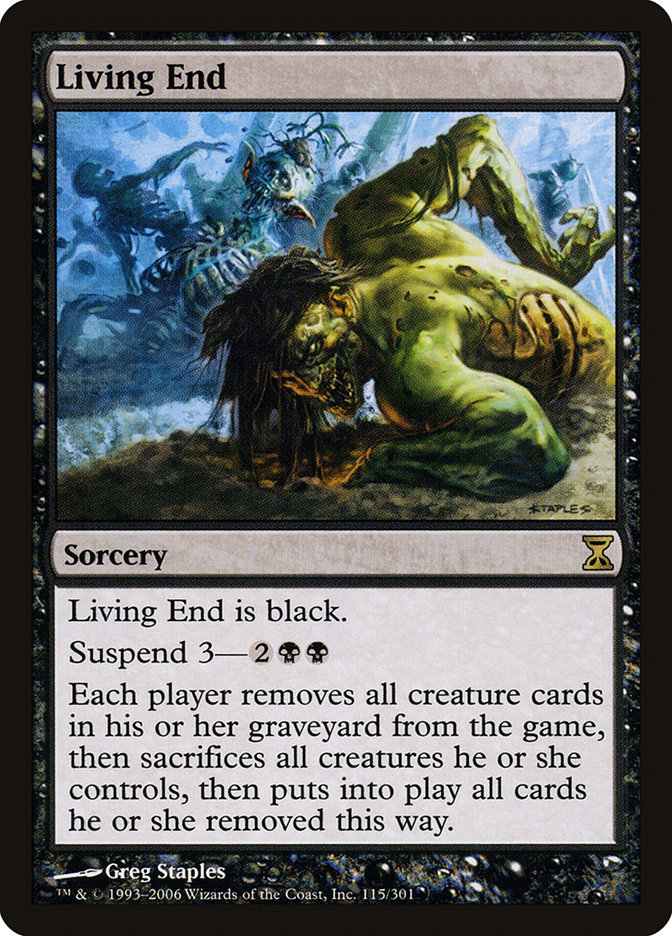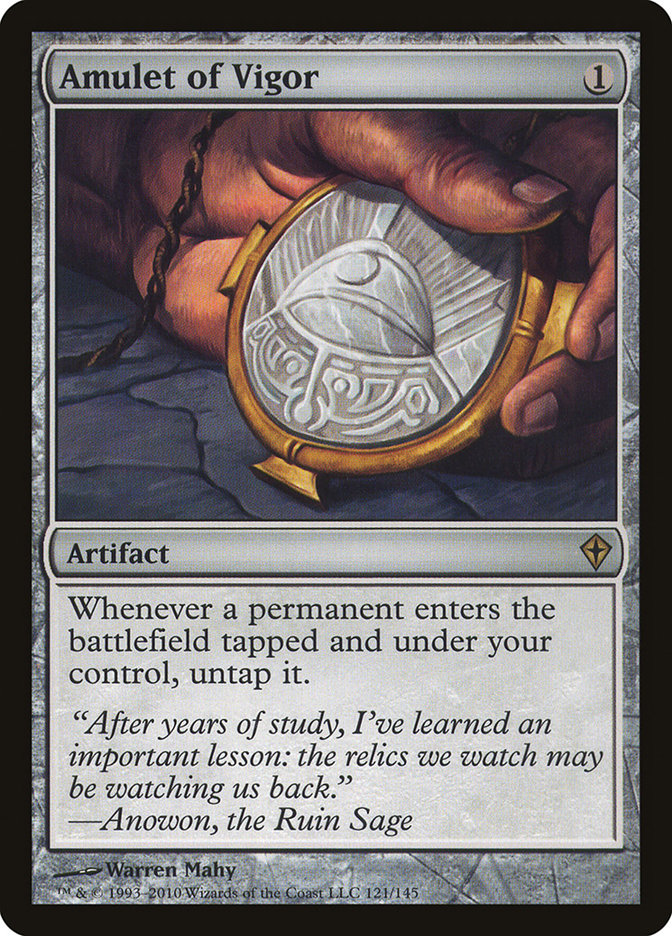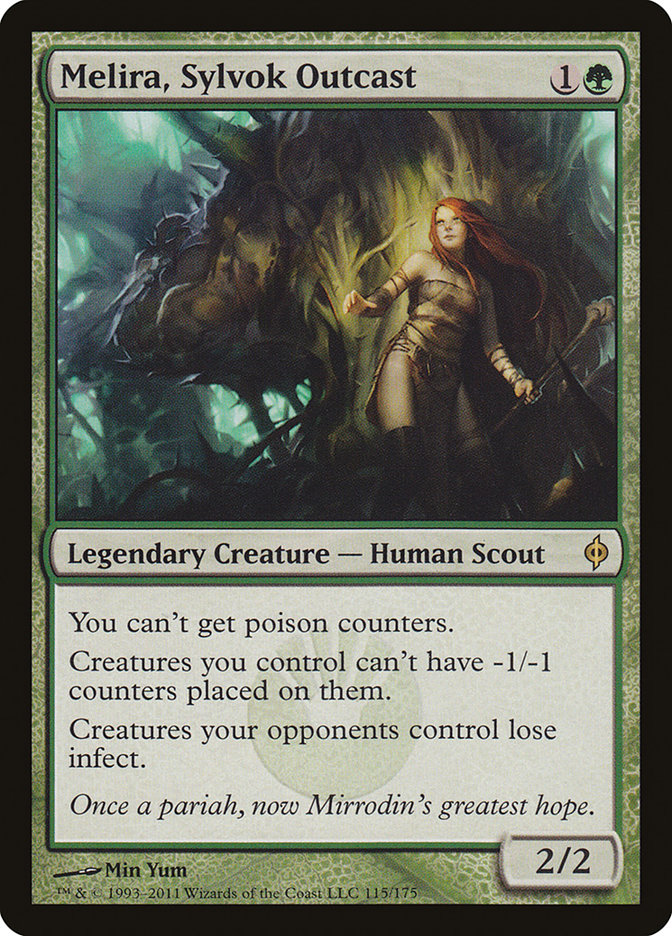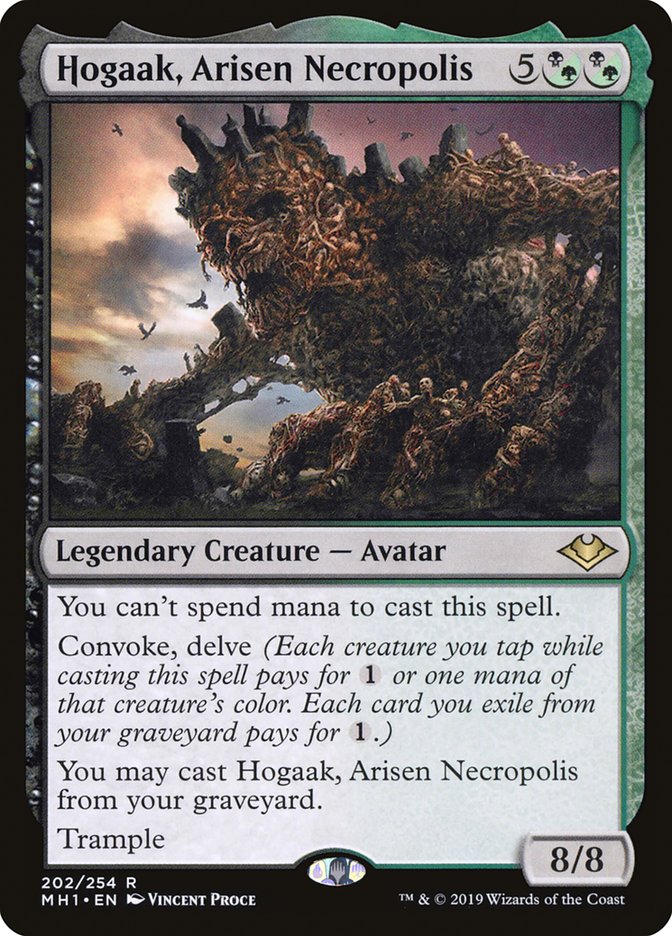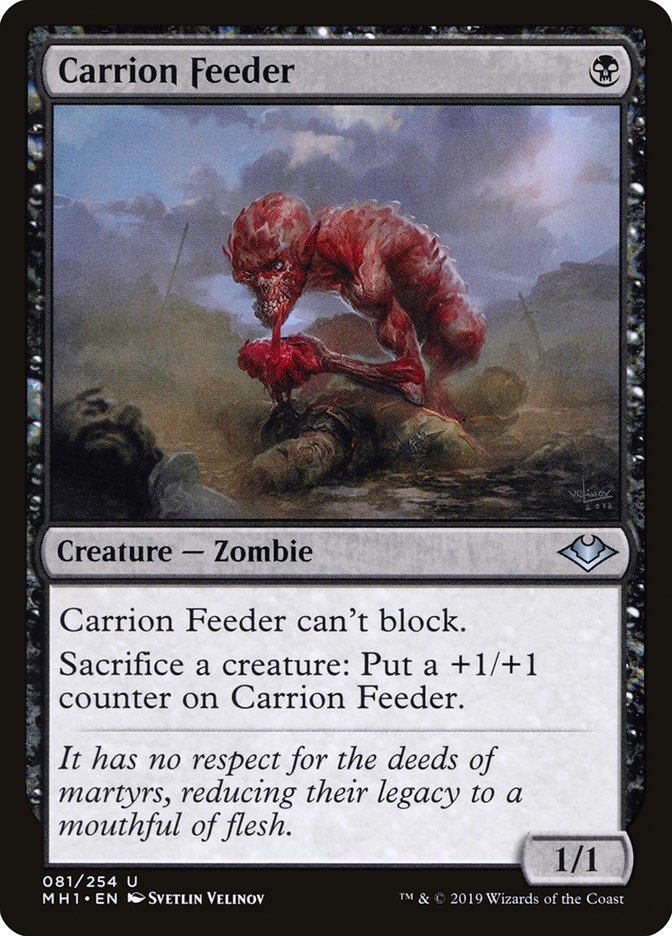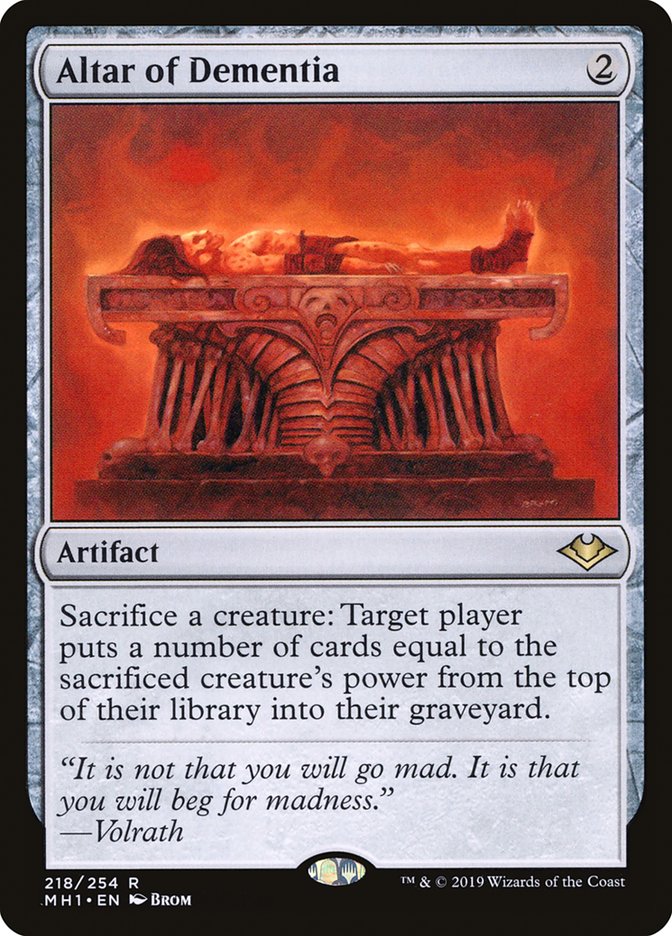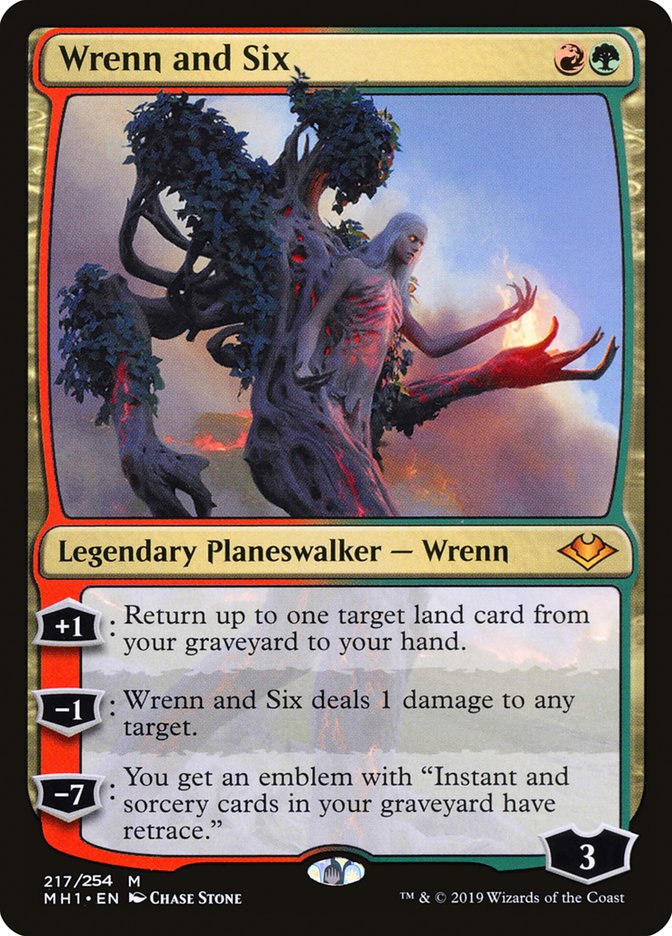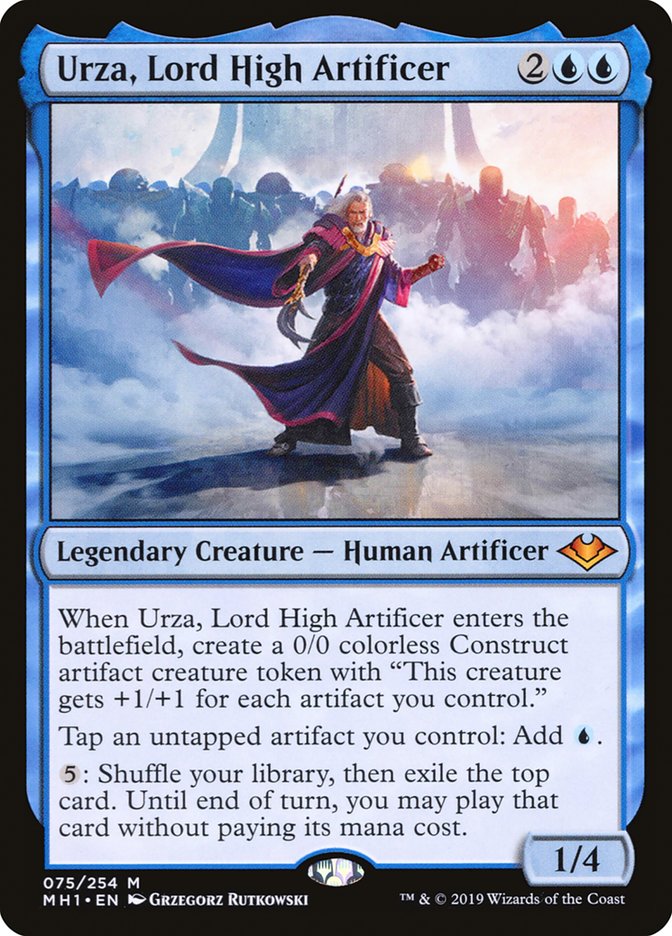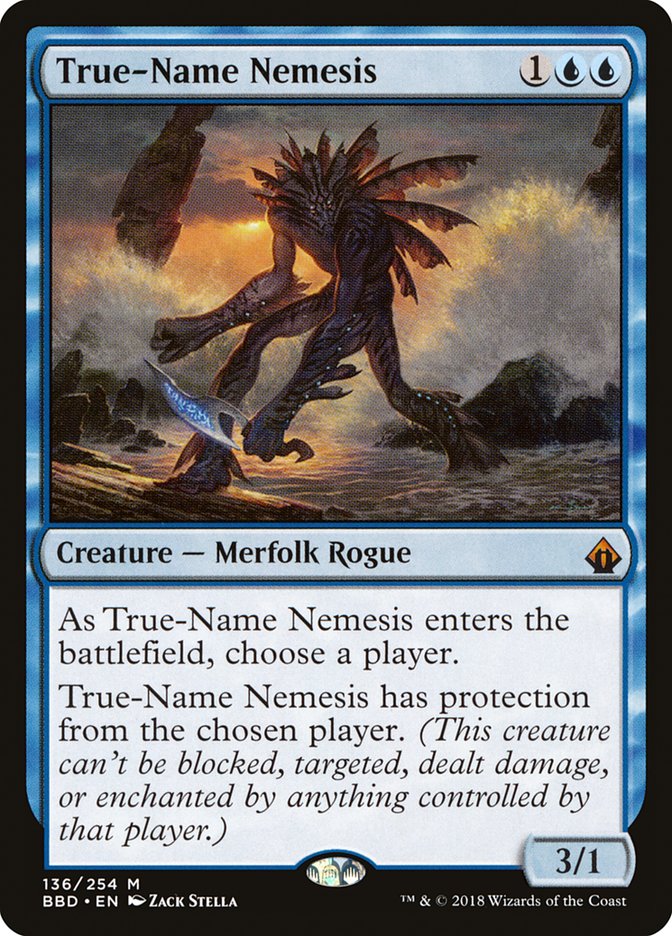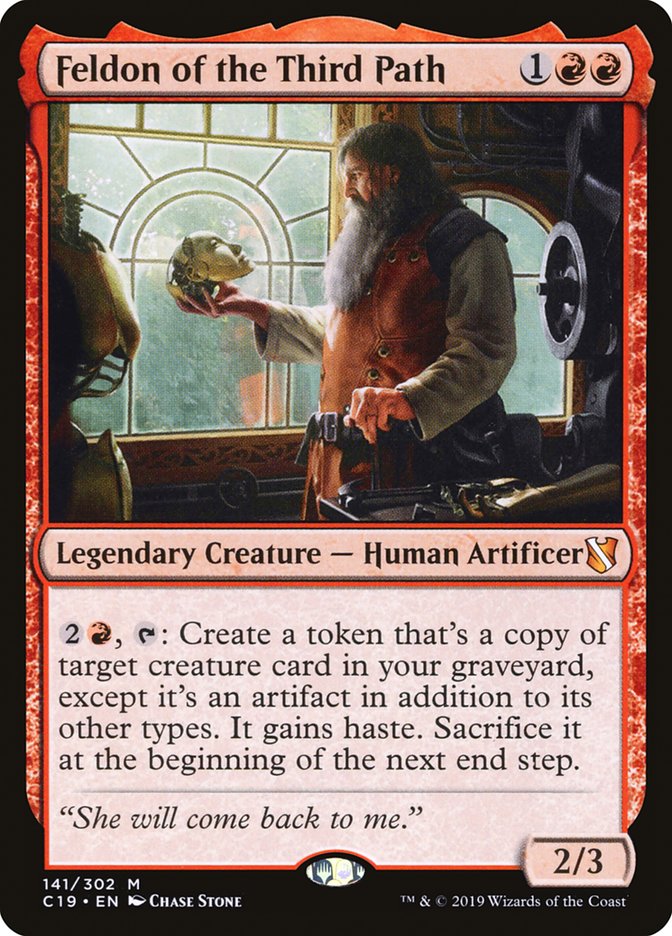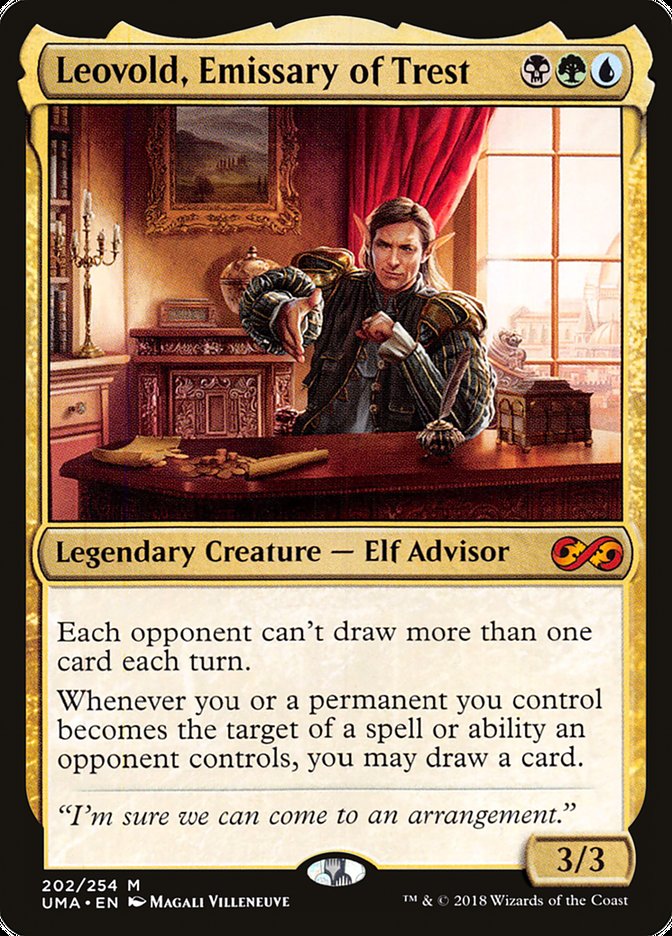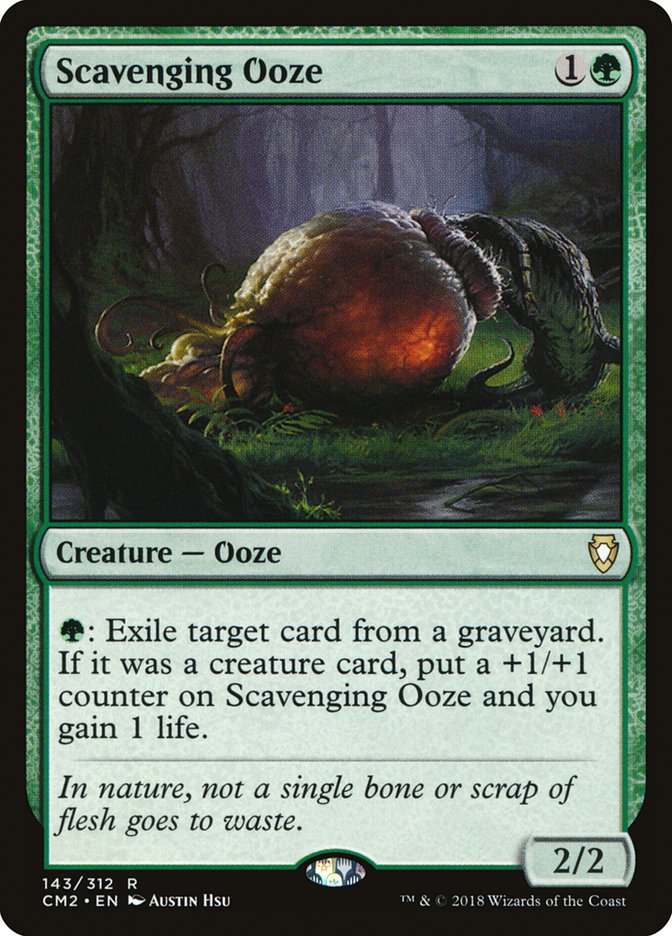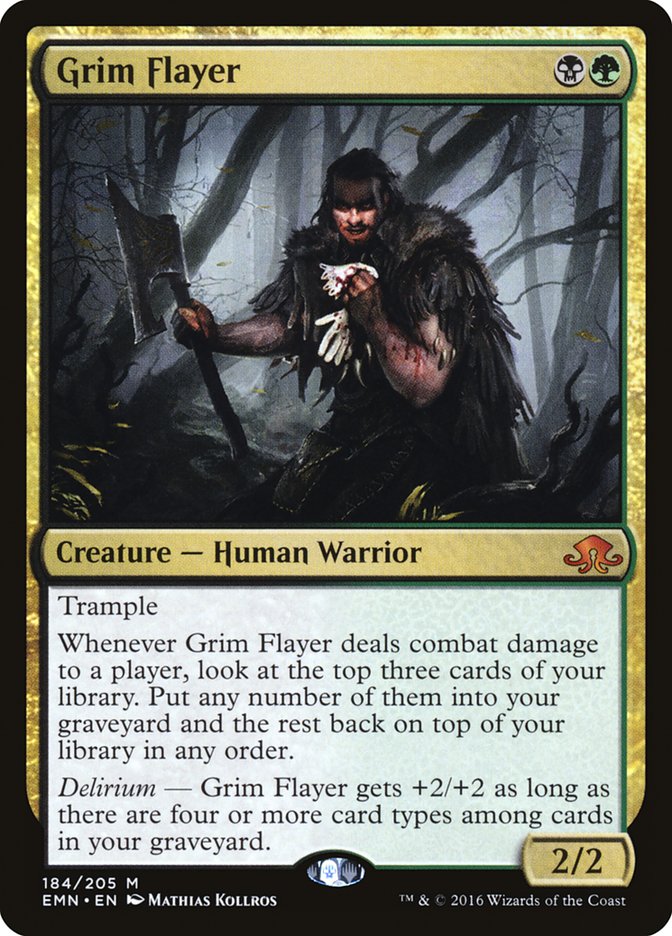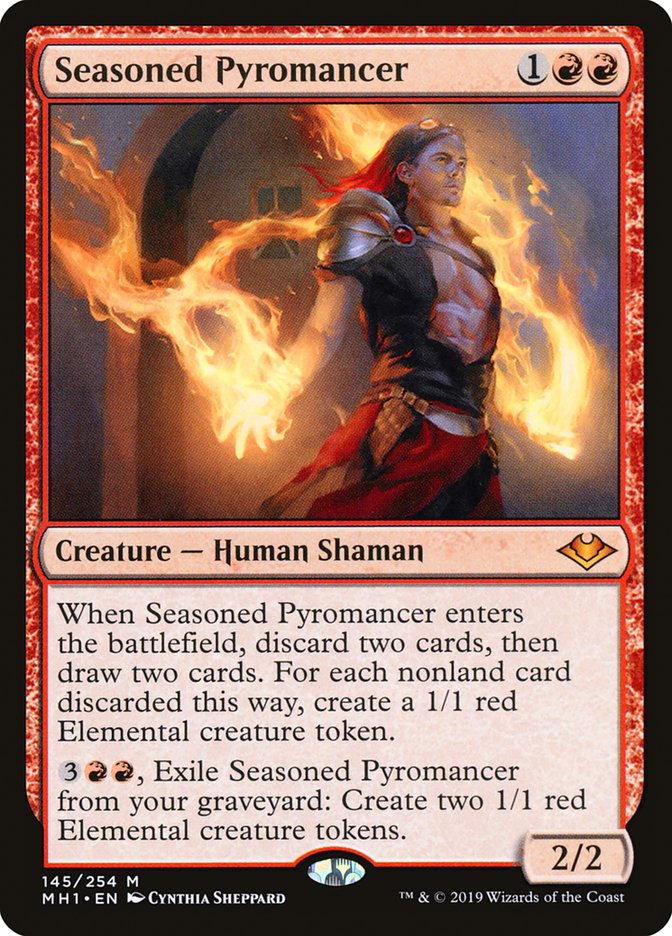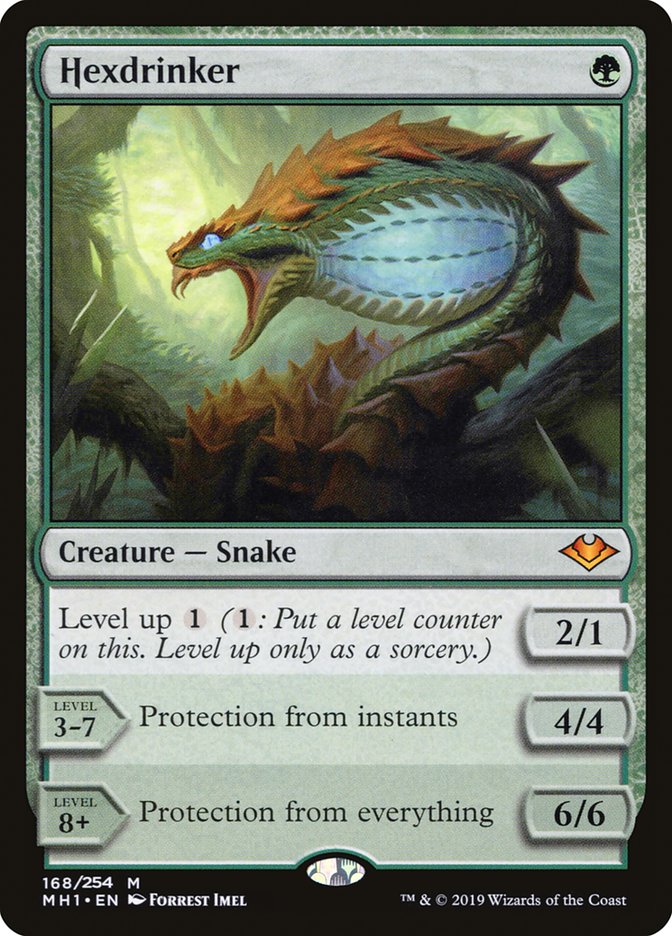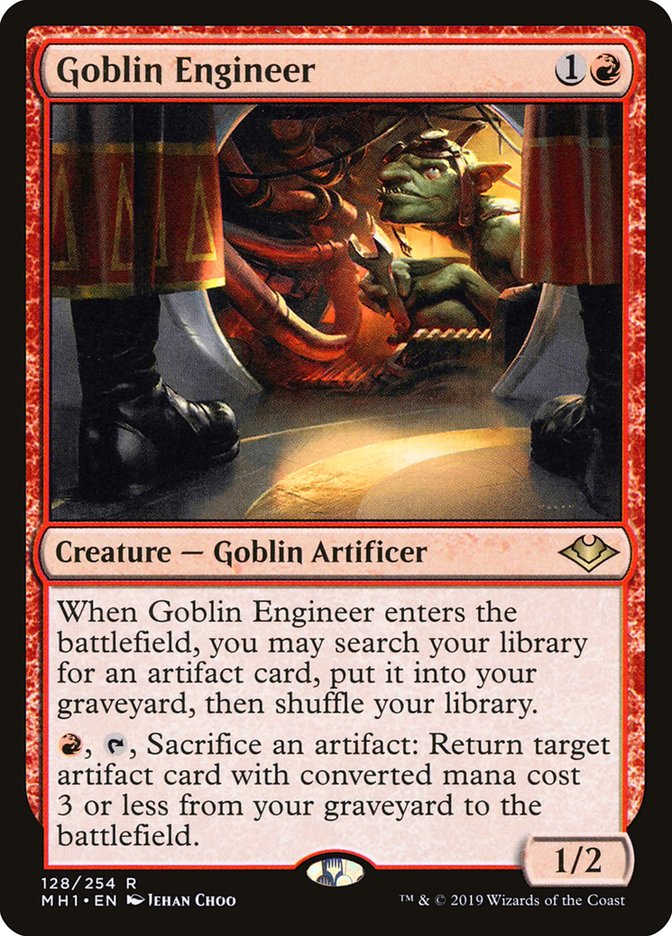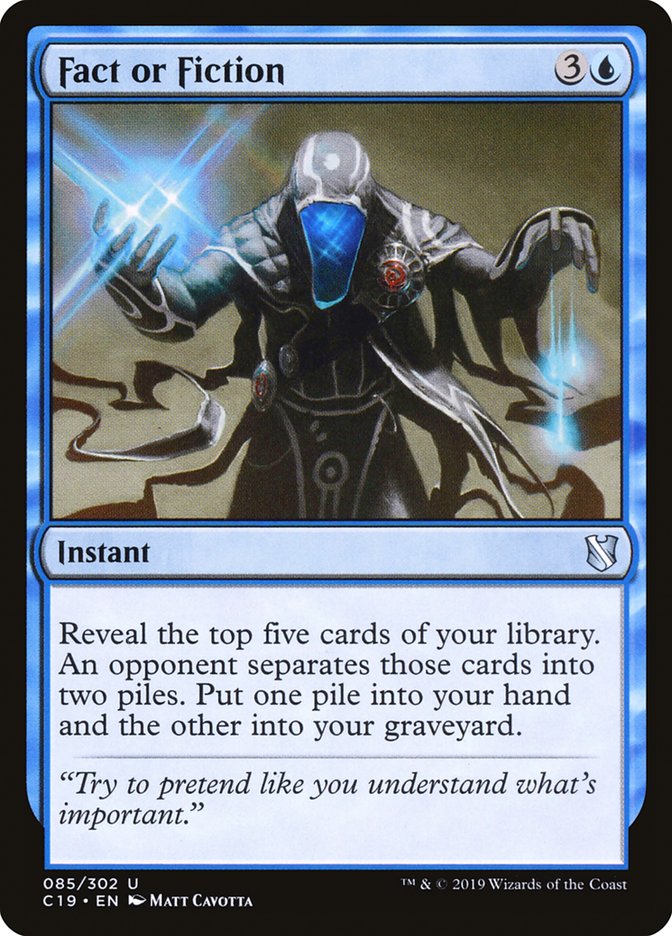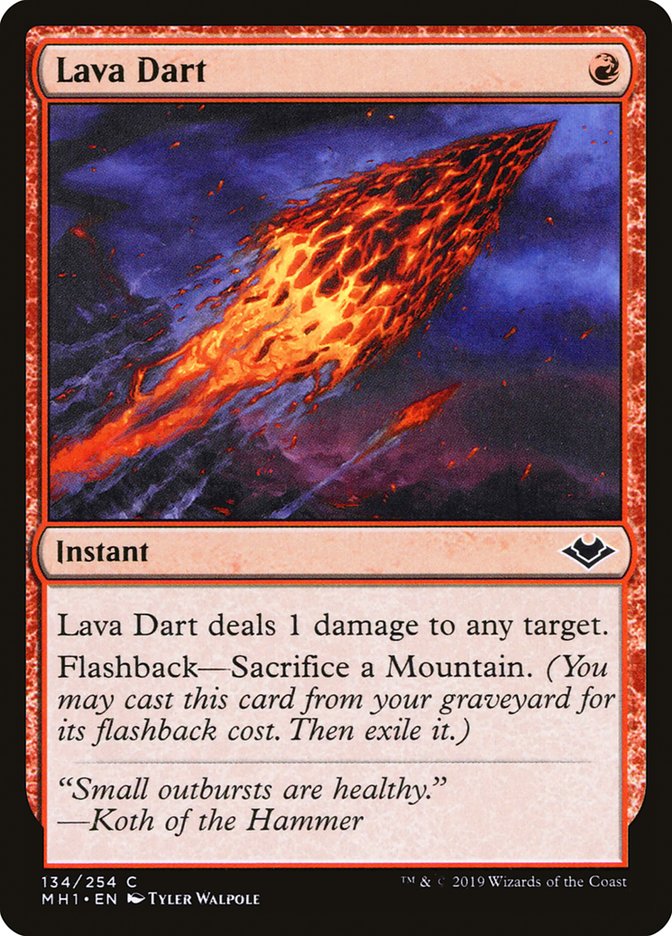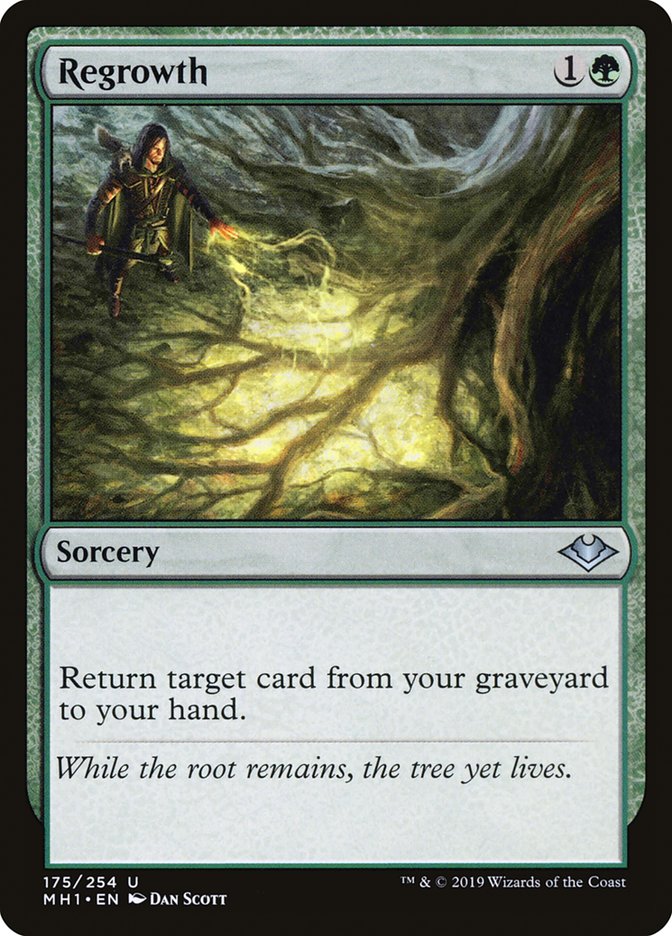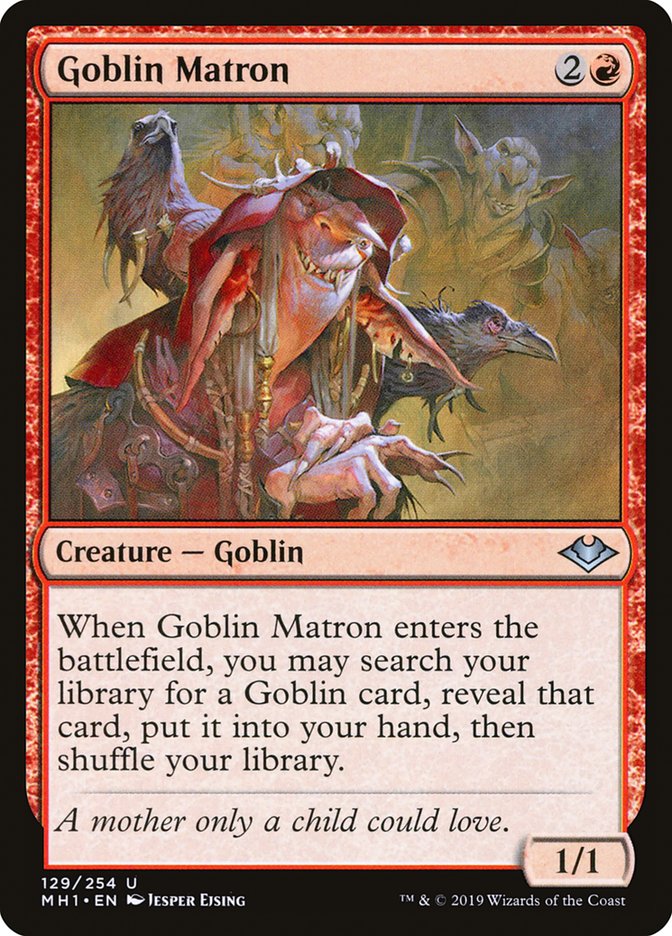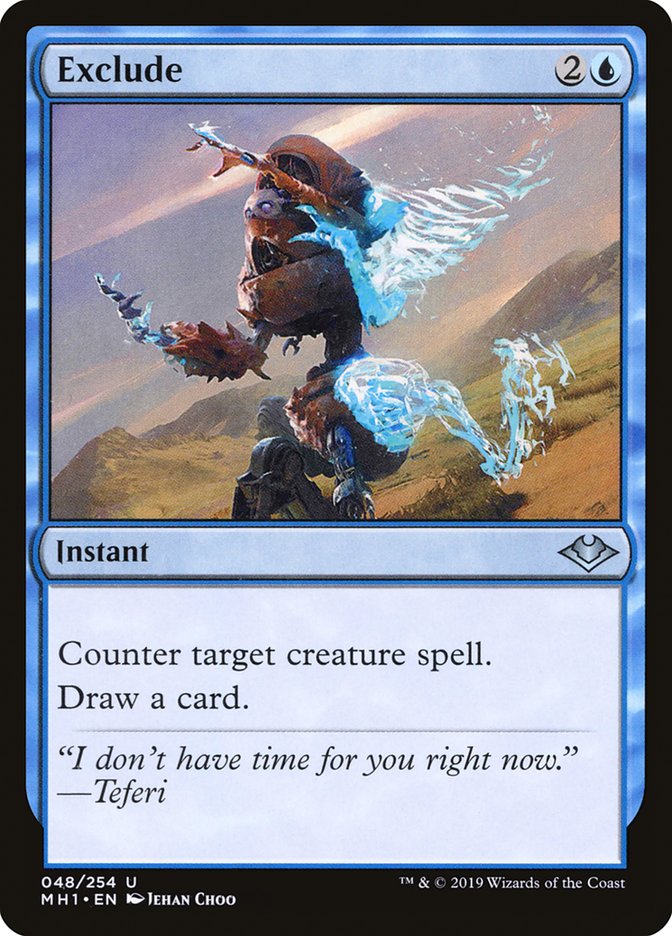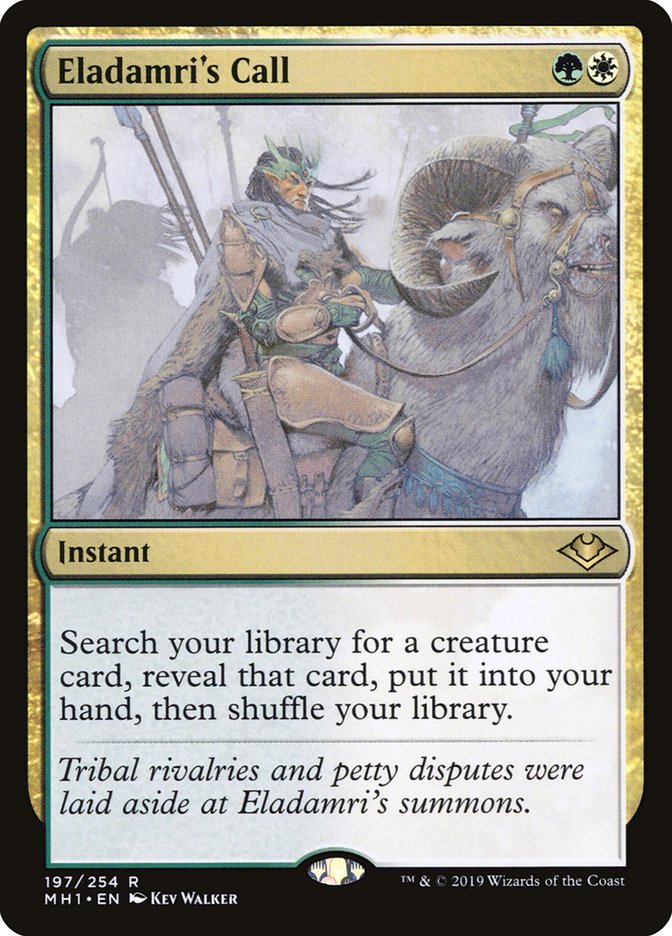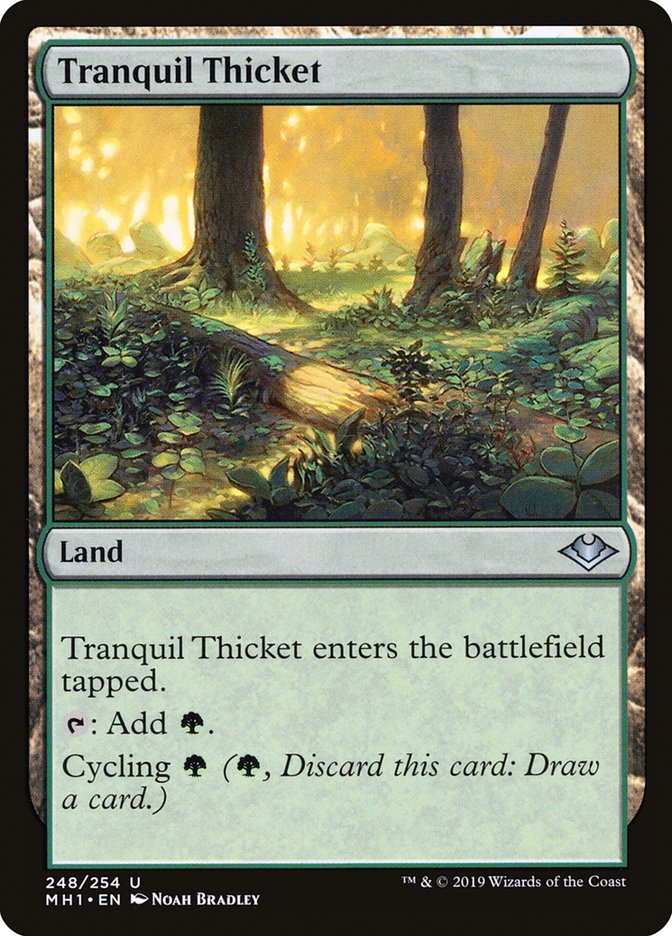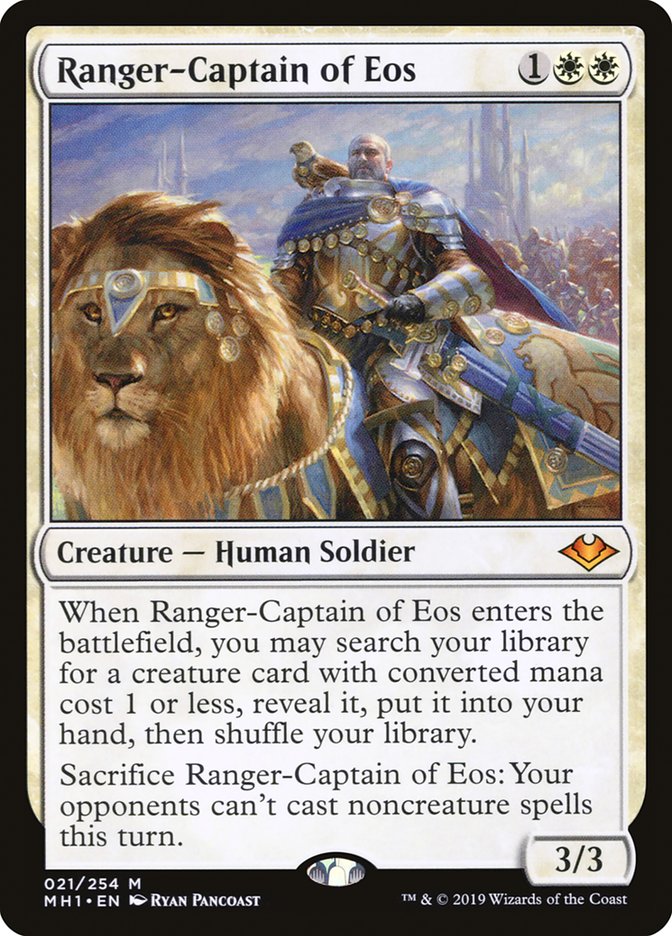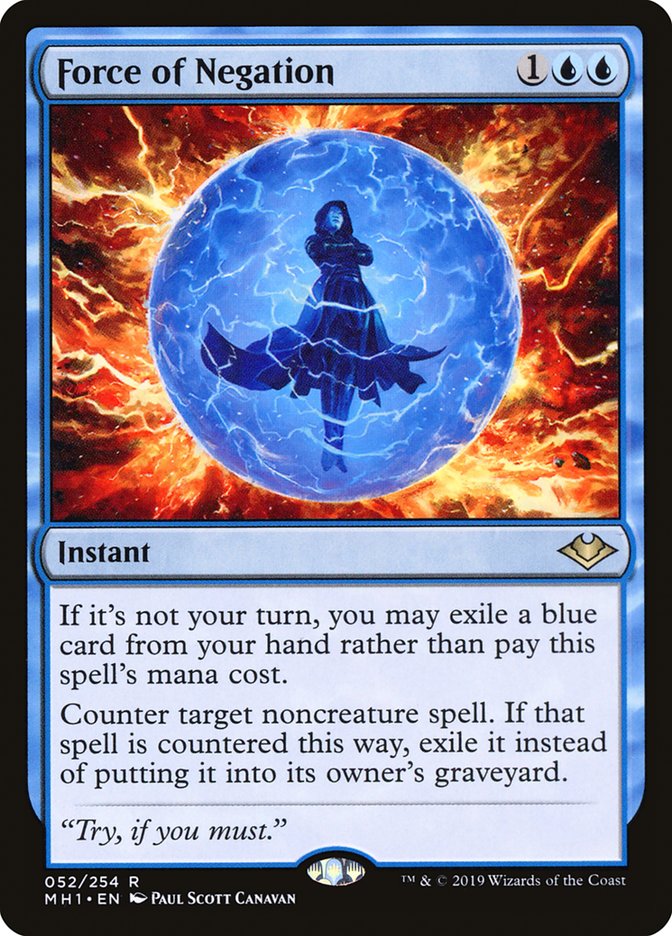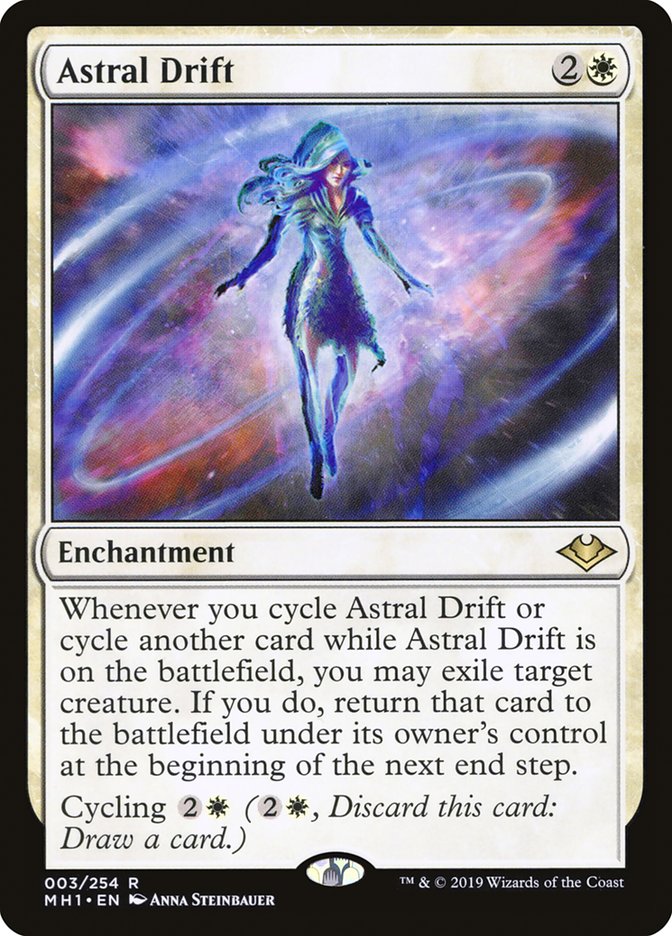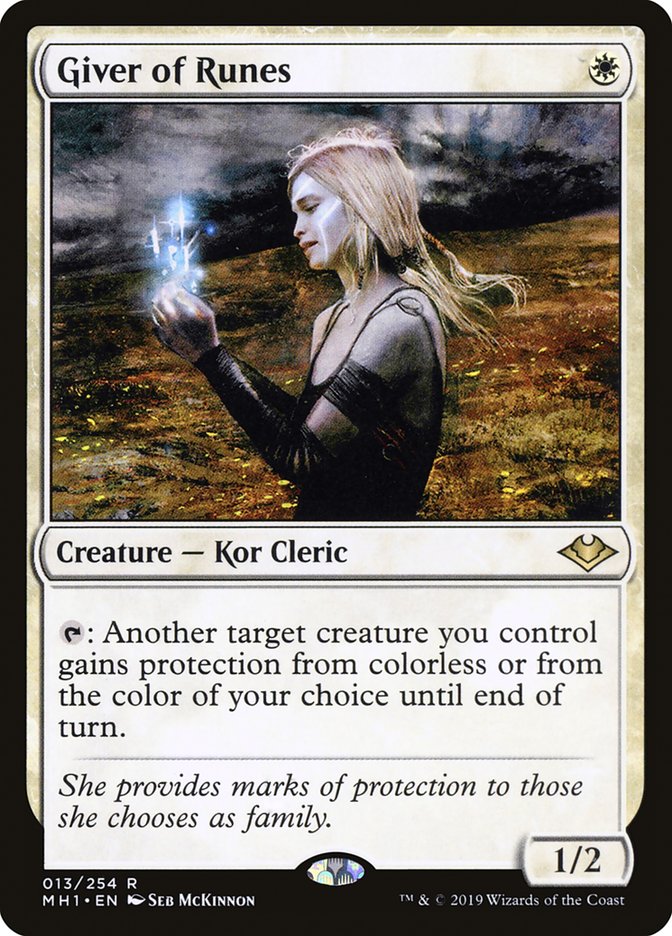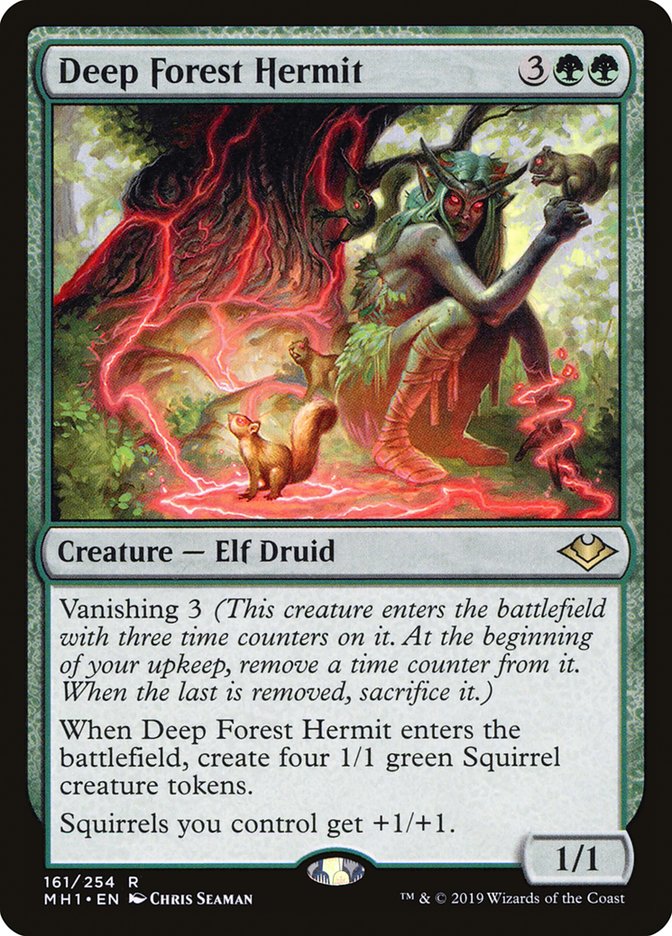I think Modern Horizons has not only made Modern a worse format, but is a dangerous path to go down. I hope to lay out what I see as the problems with how Modern Horizons was executed, what can be done to address them, and what can be done in the future if related products are important for Wizards of the Coast to make, from their perspective.
And it’s not really about balance.
Just to be clear, I’m not talking about the death of Magic, nor suggesting that Modern isn’t still popular. I’m also not suggesting that this topic is the only “problem” facing Magic right now. I cannot remember the last time there was such a high simultaneous concentration of “They ruined Magic” and “This profitable part of Magic is doing the best ever.” Things change, and maybe the changes really cut out parts that meant a lot to me; it could easily be very right for them to do them and stand by them. That whole area isn’t really my focus today, however.
What is the point of the Modern format?
This is an interesting question that I don’t think is as easy as:
- Standard – Hopefully games last at least four turns.
- Modern – Hopefully games last at least three turns.
- Legacy – Hopefully games last at least two turns.
- Vintage – Hopefully both players get a turn.
- Commander – Hopefully games are fun.
It’s also not just:
- Standard – The Opt experience
- Modern – The Faithless Looting experience
- Legacy – The Brainstorm experience
- Vintage – The Restricted list experience
Nor:
And it’s not:
These are just crude one-dimensional aspects that may contribute to some of the format’s identity. They aren’t the point.
“The point of Modern is to have fun.”
Okay, two things. First, obviously too general. Second, even if that was true…
Modern is where all the greatest hits get to live on. There’s a little bit of the Street Fighter 2 experience (or what MMA was supposed to be before people solved it and realized Brazilian jiu jitsu combined with wrestling is just the best way for humans to fight under those constraints), where the champions of every strategy get together to duke it out.
And it’s not just the greatest hits for powerful archetypes, but also greatest hits for powerful cards leading to a juiced-up format where everyone is just stronger than we’re used to seeing them (but against much stiffer competition).
But that’s not the end of it. Not only are the most powerful decks of the Modern era on display, juiced-up with the most powerful cards, the format is a vast landscape in which players invent incredible new strategies combining cards from across eras in ways that make them much more than the sum of the parts.
This philosophy, combined with a careful management of the Banned List to cut off sharp peaks at the top of the format, has allowed for a format where more than 30 different broken strategies exist, but they all sort of balance out and keep each other in check.
Modern Horizons appears to have been designed with a goal of having something new to offer everyone. After all, once you’re just making straight-to-Modern cards, why not make a new card for every archetype?
Okay, let’s set aside propping up Dredge and graveyard decks, and whether that’s a fundamentally flawed desire. I think it’s reasonable to assume that everything still legal in Modern is fair game.
Let’s even set aside giving these sorts of decks a lot more than a single new card. After all, it’s not unreasonable to think Carrion Feeder might have been intended to be somebody else’s card, and to think Altar of Dementia might be its own thing and it just happened to come out too strong. Stuff happens. It’s not the end of the world.
You see, the issue isn’t even the obvious balance problems.
Let’s assume Hogaak-adjacent cards came in a little high. If that were the problem, it would work itself out after a couple of Banned List updates. It may involve some crazy tournaments and broken formats, and maybe the next Banned List won’t even be enough yet. It’s still not that big a deal. Sometimes stuff comes in high.
Here’s the problem.
Wrenn and Six is far from the only example, but it’s the perfect one. On the surface, you can say Wrenn and Six is a card for Jund and Loam decks that has some play to it and helps provide some direction in deckbuilding, while increasing the presence of planeswalkers in Modern and enabling some gameplay different from anything we see in Standard.
What’s the difference between Wrenn and Six and Liliana, the Last Hope? I’m not even talking about the bordering on fake casting cost (because you know damn well they aren’t likely to have shipped this card this way if it was ever going to be played in Standard).
Liliana, the Last Hope was a powerful card in Standard that has purpose, that has meaning in Modern. It informs your deckbuilding, has play to it, and happens to work well in Modern because of how it lines up with and against stuff.
It’s also a real card.
It was presented as a legitimate offering, and lots of players played with and against it for years, earning it the cachet of a champion. It built up a body of work, earned its reputation, and then went on to succeed in Modern, despite how many Standard all-stars don’t live up to their pedigree when they join the big leagues.
Some cards are so obviously off the charts and cheap, their success in Modern is a foregone conclusion.
A card like Liliana, the Last Hope, however, took games. It took work. It took people trying it, believing in it, and building on it. Eventually, they were able to prove that they could use her well enough in this much harsher battlefield to justify her inclusion. She has proven herself worthy on the merits, not just the nostalgia of players that have enjoyed using her over the years.
What did Wrenn and Six do to earn a spot as one of the most powerful and defining cards of the format?
It was printed intentionally overpowered because it doesn’t have to live up to the standard every card before this set had to live up to.
Well, when you make the rules, you get to do that. It doesn’t mean legitimacy doesn’t suffer.
Somebody played Liliana, the Last Hope when it was controversial. A lot of people have a personal investment in the development of it as a Modern strategy, and a lot of people have nostalgia for the card.
What nostalgia does Wrenn and Six evoke?
It’s not like the card is a more powerful version of a classic hit that doesn’t quite have enough juice to show up in Modern. It’s not that a card that was transparently designed for a specific deck is a problem. It’s just that, rather than leave anything up to chance, anything up to exploration, it’s given enough rate to account for anything but lack of artistry.
Who developed Wrenn and Six?
Yeah, WotC designed both cards, but Liliana, the Last Hope wasn’t assured of success in Modern. Players were involved in that.
Like, how much investment can you have when the card was made intentionally overpowered to ensure it “got there?” I’m not trying to take anything away from people that have been building the best Jund decks with it. There’s certainly some player involvement; it’s just kind of a different thing when it’s predestined. We’re also talking about it working extremely well Day 1, you know, with the whole “it’s intentionally overpowered and designed to slot into an existing archetype” thing. How much evolution, how much exploration has there been in the last couple of months?
How much more do you suppose there will be?
I’m not saying people won’t use it. They obviously will. It was intentionally made overpowered.
I’m saying the history of that card isn’t going to be particularly rich, right? I mean, Liliana was a Standard card for years, working her way up to the big leagues. She’ll come and go from the spotlight, but it will be on her merits. She may not be as objectively powerful as Liliana of the Veil, but there are times, decks, places where she’ll be the better choice.
Wrenn and Six is the boss’s kid. It never had to play by the same rules. It was given a free pass. What is its struggle? Fighting it out with its siblings Hogaak and Urza?
You know what Wrenn and Six is?
True-Name Nemesis is the epitome of the wrong way. It was released in a Commander product, despite being so transparently not a Commander card. It’s not even legendary. It was intentionally sent out the door extremely overpowered, since it didn’t have to play by the same rules. And for what? Is it the perfect balancing mechanism for keeping the format together?
Actually, much the opposite. True-Name Nemesis is brutal against anyone playing fair, but no problem for most unfair decks.
I’m not saying there’s no room for making new cards in Commander products.
Feldon of the Third Path is such a better way to do it, though. It’s a little dubious if they would ship a card like this in a Standard set, but it’s not clearly out of bounds. The thing is, it appears to be a good-faith design in the spirit of the set.
First, it’s actually legendary. It’s a plausible Commander build-around. It’s even a good top-down to a character from Magic’s history. Great. If you’re going to make new cards in Commander, this is a great way to do it.
To me, this is the floor. This is the closest I can see to the line. I don’t like this design or the impact it has. I don’t think it’s particularly fun, nor some evocative top-down that inspires deckbuilding. However, at least it’s legendary. I think the game would be better without this sort of thing, but at least it keeps with the product’s core conceit.
And as much as I think True-Name Nemesis shouldn’t be acceptable in Commander products, I generally don’t have nearly the problem with straight-to-Legacy cards as I do with straight to Modern cards. After all, what even is Legacy? At this point, the format is so huge and crazy, it’s kind of just this different place with a longer list of cards that actually show up than any other format ever.
What (mostly) killed Vintage?
You can point to the price tag of Black Lotus, if you want to, but the format was still alive and well for a long time with absurd prices of the top cards. It was nothing like Standard, of course, but it had a larger, more active community. What happened?
Proxies.
Tournaments started allowing proxies (since, come on, the cards are too expensive!), and then interest kind of waned after a little bit. Why?
Proxies made the game less fun.
Why?
Legitimacy matters. Part of the fundamental conceit of Vintage is that you are playing with the most broken overpowered cards in the game’s history. It’s not just complete immersion in some of the game’s richest historical significance, nostalgia, and cachet. It’s like seeing Michael Jordan in his prime, and you’re doing it. When you play in a tournament with proxies, you are pretending to be Michael Jordan. It’s not the same thing.
Modern Horizons is a set full of cards pretending to be legendary all-star cards.
They didn’t earn it.
And maybe it would be okay, if the gameplay was just that good…
…but is it even good?
Is Modern a better format for the diverse mix of options players used to run at the two-spot all being standardized into the predestined configuration?
Maybe in any one game you might believe in the gameplay, but it certainly gets old. All the Jund decks collapsing together makes for a more boring and repetitive experience.
But okay, maybe that’s really a power level development critique. Maybe Wrenn and Six and Hogaak and Urza are the problems, and not the set. But then let me ask you, do you really think that’s it? That’s where it stops?
Let’s say they ban Hogaak. And then let’s say it’s three months later and they ban Faithless Looting.
Is that it? Are we back to 30 different broken decks in an uncanny balance, rather than a Standard level of diversity?
Maybe it’ll be great. I don’t know. But just as a hypothetical, let’s imagine they ban Sword of the Meek (to pay for Urza). Is that enough? Hell, what if they just outright banned Wrenn and Six?
You see, I really don’t think they can just ban their way out of this. Not practically, anyway. I mean, sure, if you ban 50 cards, we can all just pretend this never happened, but that’s not fair, that’s not realistic, and that doesn’t address the real issue anyway.
No, my proposal?
Print Wrenn and Six; Urza, Lord High Artificer; Seasoned Pyromancer; Hexdrinker; Goblin Engineer; Ayula’s Influence; Yawgmoth, Thran Physician; and the like in Standard-legal sets.
I’m not talking all at the same time, but slowly, over time, one here, and one there.
At least these were real cards. Reprinting them without having them spend time in Standard is a very different animal from Wrenn and Six.
At least these are obviously just reprints of iconic cards, but slightly tweaked to improve the quality of gameplay or avoid the Reserved List.
I already take it as a given that Modern will need some work to get out of the hole this set has left it in. And just to be clear, I think this set probably actually went above-average for what it was designed to be. Obviously Hogaak is a serious problem, but once you’re making a set like this, I think they mostly made smart bets and did a better job than I think you’d get in the majority of universes.
So, assuming they do what they need to do to get the format to open back up again, my hope is that they don’t hand-wave the legitimacy part of the equation. I don’t think reprinting all those cards is the perfect solution, but I think when you start doing that, it sends a signal that kind of helps the legitimacy of the ones “they haven’t gotten to yet.” Then you’re kind of making the set into something else, a sneak preview into the future, rather than someone’s custom Cube.
As for future products, I understand the desire for Modern-specific products, and if that’s what is called for, okay. All I would encourage is saving the points for the improved-quality-of-design versions of cards that already exist (which can even include just a more powerful version of a card they made for Standard, though I would stress the importance of getting the card over on the quality of the design and how it interfaces with the format, rather than just giving it a free pass on rate).
I think this way is still dangerous, though at least the cards can be seen as the continuation of something real, something with nostalgia or personal investment.



